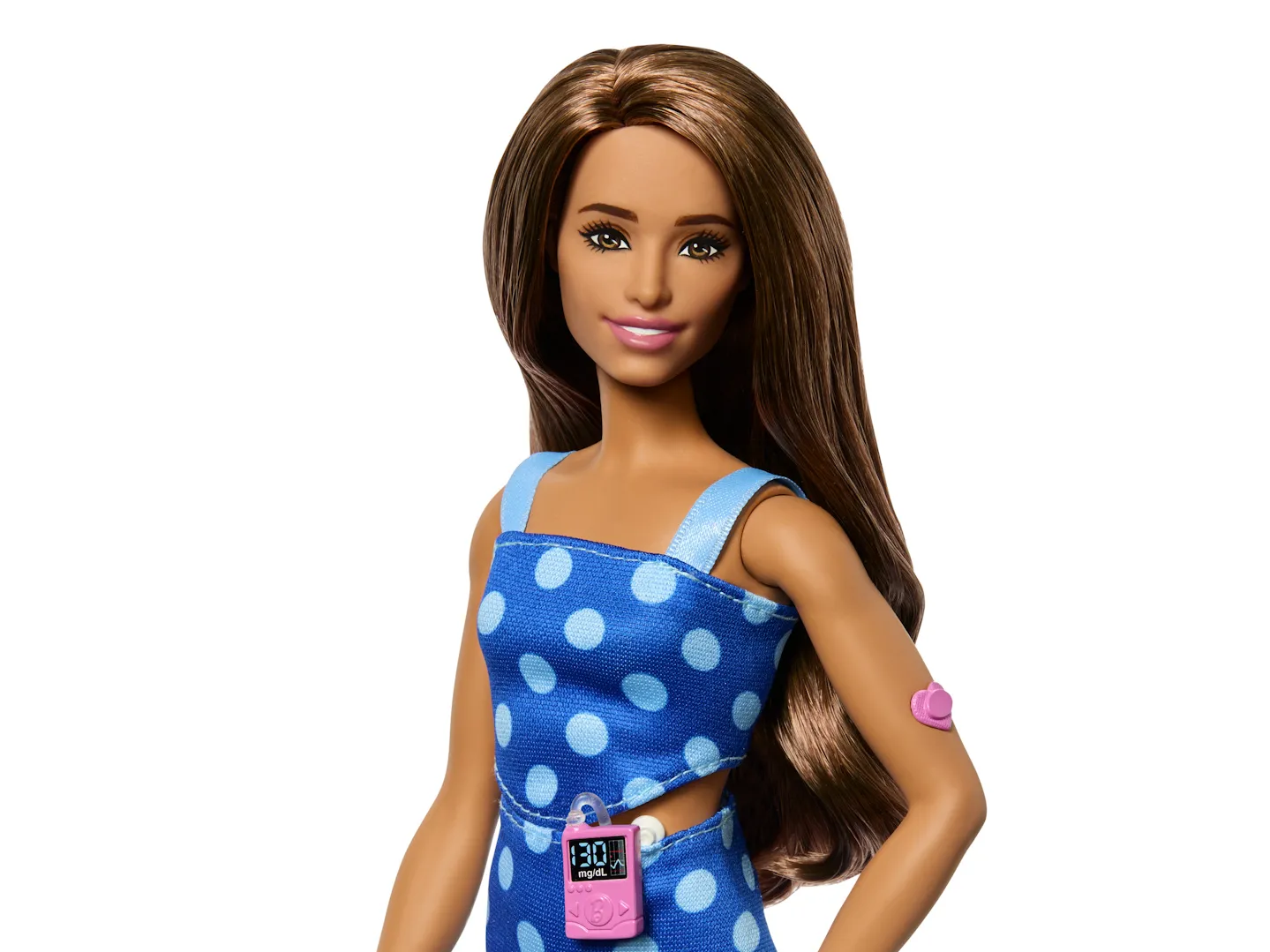The type 1 diabetes Barbie doll is more than just a new toy on the shelf—it’s a powerful symbol of representation, awareness, and inclusion. In 2025, as chronic health conditions like type 1 diabetes become more openly discussed and understood, Mattel has stepped up with a groundbreaking move that changes the game for children living with diabetes. The launch of the type 1 diabetes Barbie doll is a heartfelt acknowledgment that children living with medical conditions deserve to see themselves reflected in their playthings. This Barbie isn’t just about fashion—she’s about real-life courage, health, and empowerment.
Designed with a Continuous Glucose Monitor (CGM), insulin pump, and other diabetes management accessories, the type 1 diabetes Barbie doll helps kids better understand their condition and feel proud of who they are. It also serves as an educational tool for others, promoting awareness and reducing stigma around type 1 diabetes. Whether used at home, in classrooms, or in medical settings, this doll is bridging the gap between play and education.
As awareness grows, the type 1 diabetes Barbie doll is quickly becoming a symbol of advocacy and acceptance—not just for kids with diabetes, but for a more inclusive future in toy design and storytelling.
What Is the Type 1 Diabetes Barbie Doll?
The type 1 diabetes Barbie doll is part of Mattel’s larger effort to reflect real-world challenges and medical conditions that children face today. This special edition Barbie comes equipped with accessories that mimic real diabetes management tools—like an insulin pump, a glucose meter, and even a Continuous Glucose Monitor (CGM) sensor on her arm.
Unlike traditional dolls that focus primarily on fashion and fantasy, the type 1 diabetes Barbie doll aims to normalize medical realities that millions of children deal with daily. This thoughtful design helps children with diabetes feel seen and validated, while also helping others understand what the condition entails.
Why Representation Matters for Children with Type 1 Diabetes
One of the most powerful aspects of the type 1 diabetes Barbie doll is its ability to create a sense of belonging for children managing this condition. When a child sees a doll that shares their experience—whether it’s wearing an insulin pump or checking blood sugar—it sends a strong message: You are not alone.
Representation in toys can directly influence how children view themselves. For children with type 1 diabetes, this Barbie becomes more than a toy; it becomes a companion who understands their everyday struggles. It also provides an educational opportunity for their friends and classmates to learn more about diabetes in an approachable, non-stigmatizing way.
The Making of the Type 1 Diabetes Barbie Doll
Mattel collaborated with medical experts, pediatric endocrinologists, and families affected by type 1 diabetes to ensure that the type 1 diabetes Barbie doll would be both accurate and impactful. The doll’s insulin pump, CGM patch, and test kit are all modeled after real tools used by kids and adults with diabetes today.
The initiative also aligns with Mattel’s commitment to the “Barbie Dream Gap Project,” which aims to close the gap between the dreams of boys and girls by providing more inclusive role models and stories.
Educational Value for All Children
The type 1 diabetes Barbie doll isn’t just for children who live with the condition—it also helps raise awareness and spark conversations about chronic illnesses. Teachers, parents, and caregivers can use the doll to explain what type 1 diabetes is, how it’s managed, and why compassion and support are so important.
This doll serves as a visual learning tool in classrooms and pediatric health settings, making it easier to educate children in a hands-on and meaningful way.
Public Reception and Media Attention
Since its release, the type 1 diabetes Barbie doll has received overwhelmingly positive feedback from parents, advocacy groups, and the medical community. Diabetes organizations such as JDRF (Juvenile Diabetes Research Foundation) and Beyond Type 1 have applauded Mattel’s efforts for normalizing diabetes care and helping reduce stigma.
Social media has also played a major role in amplifying the impact of the doll. Parents have shared touching videos of their children discovering a Barbie who looks and lives just like them. These moments are a testament to the emotional power of inclusive toys.
Encouraging Emotional Wellbeing
Managing a chronic illness like type 1 diabetes can be emotionally taxing for children. The routine of insulin injections, blood sugar monitoring, and food tracking can make them feel different from their peers. The type 1 diabetes Barbie doll helps bridge that emotional gap by offering a relatable and empowering presence during playtime.
Studies show that toys that reflect a child’s real-life experience can improve self-esteem and emotional resilience. This Barbie is not just a product—she’s part of a child’s support system.
A Step Toward More Inclusive Toys
The type 1 diabetes Barbie doll represents a wider trend in the toy industry: a shift toward meaningful representation and real-world diversity. From dolls with prosthetic limbs to those in wheelchairs or with vitiligo, inclusive toys are helping rewrite the narrative for millions of kids.
This Barbie isn’t just fashionable—she’s educational, compassionate, and deeply human. Her story encourages both awareness and acceptance, setting a new standard for what toys should offer in 2025.
Conclusion: Why the Type 1 Diabetes Barbie Doll Matters in 2025
The introduction of the type 1 diabetes Barbie doll marks a significant milestone in the world of toys and healthcare representation. This doll not only empowers children living with type 1 diabetes but also educates the broader community about the realities of managing this condition daily. By incorporating real-life diabetes management tools like insulin pumps and CGM devices, the type 1 diabetes Barbie doll creates a meaningful connection for children who often feel unseen in mainstream media and toys.
In 2025, representation matters more than ever, and the type 1 diabetes Barbie doll sets a powerful example for inclusivity in the toy industry. It encourages empathy, understanding, and acceptance, paving the way for a more informed and compassionate generation. Beyond being a plaything, this Barbie doll becomes a symbol of hope and normalcy for countless children managing type 1 diabetes.
Ultimately, the type 1 diabetes Barbie doll is a step forward in breaking stigma, inspiring confidence, and spreading awareness. It proves that toys can be more than just fun—they can be powerful tools for education and emotional support. For families, educators, and healthcare professionals, this doll offers a valuable resource to foster conversations around health, diversity, and resilience.
For more insightful reviews and health-focused innovations, visit bloghear.com.




